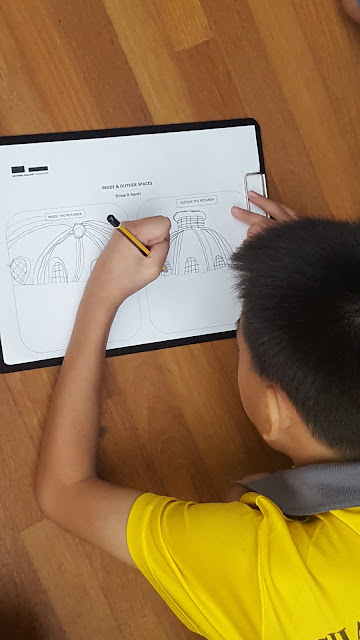The upper primary children were given isometric paper (as shown in the first photo) to draw their names in 3D bubble letters. They were given isometric dot paper as they had experience drawing quadrilaterals in their Mathematics class. Some of the children had a lot of difficulties writing 3D bubble letters but they were determined to own their own 'glass paint' so they had to redo their work. Some words of encouragement definitely helps and also practical help from their friends to ensure no one is left behind.
The children's work are kept between wax paper, with the waxy side facing the glass paint. I've tried chicken rice paper and freezer paper and both worked well. Children should learn how to take care of their work, especially in the process of transportation so they can preserve it for the enjoyment of others. They were warned that it would be disastrous if the glass paint come into contact with other worksheets in their bag!
The children's work are kept between wax paper, with the waxy side facing the glass paint. I've tried chicken rice paper and freezer paper and both worked well. Children should learn how to take care of their work, especially in the process of transportation so they can preserve it for the enjoyment of others. They were warned that it would be disastrous if the glass paint come into contact with other worksheets in their bag!




























